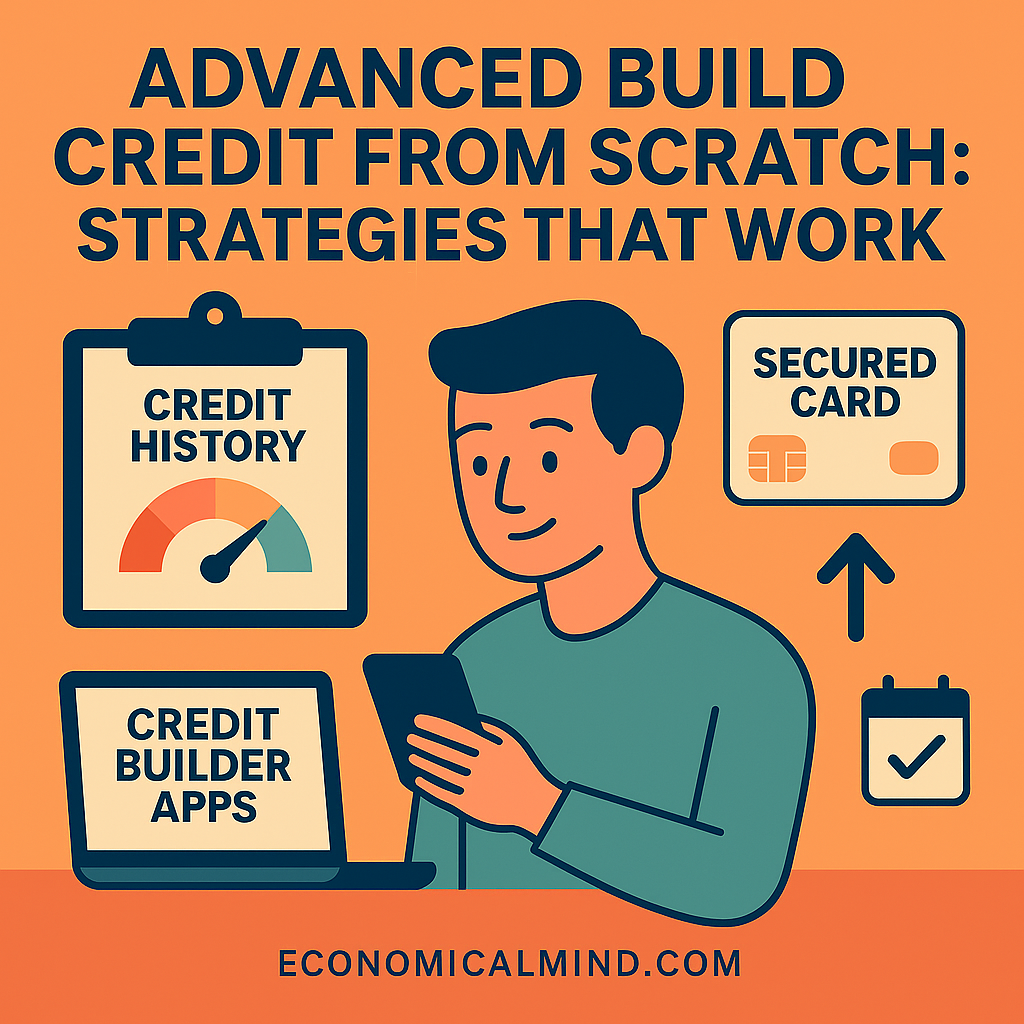
Starting with no credit history can feel like standing at the base of a mountain — you know reaching the top opens financial opportunities, but the climb seems uncertain. Fortunately, building credit from scratch isn’t as hard as it looks. With the right strategies, you can establish a strong credit profile that grows with you and opens the door to better loans, housing options, and even job opportunities.
Understanding How Credit Building Works
Credit is your financial reputation. It tells lenders how likely you are to repay borrowed money based on your history of managing debt.
Your FICO score (ranging from 300 to 850) is determined by five main factors:
• Payment history (35%) – Whether you pay bills on time.
• Credit utilization (30%) – How much of your available credit you use.
• Length of credit history (15%) – How long your accounts have been open.
• Credit mix (10%) – Variety of credit types like cards, loans, or auto financing.
• New credit (10%) – How often you apply for new accounts.
When you’re just starting, the goal is to create positive data in these categories.
Strategy #1: Start with a Secured Credit Card
A secured credit card is one of the easiest and most effective ways to build credit. You’ll deposit money (typically $200–$500), which becomes your credit limit. Use it responsibly and pay off balances in full each month.
Over time, your on-time payments are reported to major credit bureaus — Experian, Equifax, and TransUnion — helping you build a track record.
Popular options include:
• Discover it® Secured Credit Card
• Capital One Platinum Secured
• Chime Credit Builder Visa®
Strategy #2: Use Credit Builder Loans or Installment Accounts
Credit builder loans are small loans designed specifically to help you establish credit. Instead of receiving the money upfront, the lender holds the funds in a savings account until you finish your payments.
These tools train you to make consistent, on-time payments, which improves your credit mix and payment history.
Recommended apps include:
• Self – Reports monthly payments to all three bureaus.
• Kikoff – Offers micro-loans designed for beginners.
• MoneyLion – Combines banking and credit-building features.
Strategy #3: Become an Authorized User
Ask a trusted family member or friend with strong credit to add you as an authorized user on their credit card. Their positive payment history will reflect on your credit file.
However, make sure:
• The issuer reports authorized users to credit bureaus.
• The primary user maintains low utilization and on-time payments.
This method can quickly add years of credit history to your profile.
Strategy #4: Automate Payments and Monitor Utilization
Missed or late payments can damage your credit early on. Prevent this by automating bills through your bank or credit app.
Also, keep your credit utilization below 30% — if your limit is $500, aim to use no more than $150.
Tools like Credit Karma, Experian Boost, or Mint can help monitor balances and payment patterns in real time.
Strategy #5: Diversify Your Credit Mix (Gradually)
Once you’ve proven reliability with one or two accounts, consider diversifying:
• Add a small installment loan (like a credit builder loan or auto loan).
• Use store credit cards responsibly.
• Explore student cards if you’re in college.
This variety improves your score over time while demonstrating financial maturity.
Common Pitfalls to Avoid
• Applying for too many cards in a short time — it lowers your score.
• Carrying balances month to month — interest cancels your progress.
• Closing old accounts — it shortens your credit history.
• Ignoring your credit report — check for errors regularly at AnnualCreditReport.com.
The Takeaway
Building credit from scratch is less about luck and more about consistency. Start small, automate your payments, and let time do the heavy lifting. Every on-time payment is a signal to lenders that you’re responsible and reliable.
The sooner you begin, the faster you’ll unlock access to better rates, higher limits, and long-term financial flexibility.
